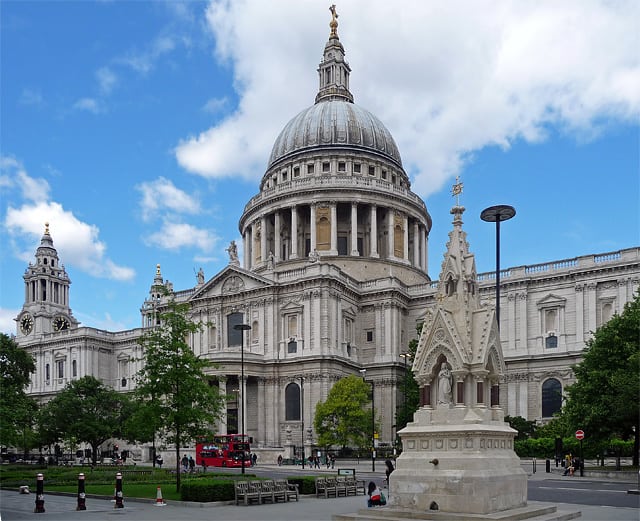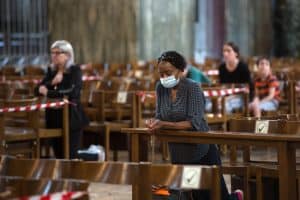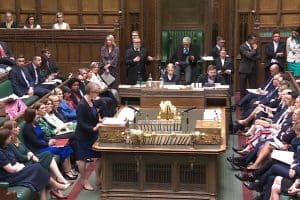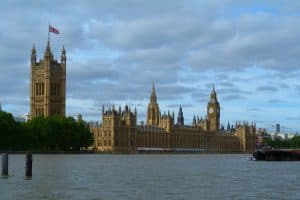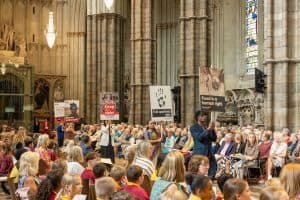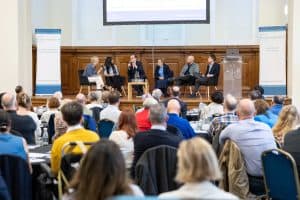By Catherine Pepinster
England’s Anglican cathedrals have been hit by a perfect storm caused by the Covid-19 pandemic, a report has revealed. They have endured a 75 per cent drop in visitors, a fall in worshippers, and an 80 per cent decrease in income from use of their facilities. And the vital role that cathedrals play in their communities’ economies means that the slump in visitors has had a huge impact on cathedral cities.
But according to the report, The Economic and Social Impact of Cathedrals in England, published today by the Association of English Cathedrals (AEC), the impact of the pandemic has also brought benefits, causing cathedrals to rethink their role in their areas. Many people turned to them to provide vital help, such as food banks and other services during lockdown, as well as spiritual solace. Now, many of them are celebrating their reopening not only with religious services returning to normal but they are also holding important art exhibitions and installations.
In 2019, England’s 42 Anglican cathedrals contributed £235m to local economies, through jobs and the knock-on economic benefits of tourism. Up to 9.5 million tourists visited cathedrals.
But early lockdown saw tourists all but disappear and even now, as Britain has opened up, cathedral tourist numbers have not recovered, due to the absence of visitors from abroad, who usually make up 43 per cent of tourists. Visitor numbers slumped by three-quarters across the past year, says the report, with spending also dropping, including in cathedral shops and cafés. There was also fall in fees derived from the use of cathedral facilities, such as the hire of halls and conference centres, accounting for an 80 per cent decrease in this income. Gloucester Cathedral, for example, lost more than half of its £2.2m annual budget.
According to the Very Rev Adrian Dorber, chairman of the AEC, it is the cathedrals that are best known to overseas visitors — St Paul’s and Westminster Abbey in London, and York, Canterbury and Durham — that were the hardest hit by the tourist downturn and are taking the longest to recover. Cathedrals that are regional ecclesiastical hubs, such as Lichfield, where he is dean, are starting to find their feet again.
“The medium-sized ones have had an easier time because they are not so reliant on one main income stream linked to tourism,” Dean Dorber said.
Although grants from the Church Commissioners and the Cultural Recovery Fund cushioned some cathedrals from the worst effects of lockdown, the financial crisis led to more than 70 per cent of cathedral staff being furloughed while two-thirds of cathedrals had to make redundancies as a direct result of Covid.
Income from collection plates also fell as, first, cathedrals closed their doors with no worship taking place, and later, when they reopened with social distancing, some vulnerable churchgoers stayed away. In 2019, an average of 362 adults and 108 children attended midweek cathedral services; in Covid-dominated 2020, these numbers dropped to 84 and 25. Restrictions on singing by both choirs and the congregations were imposed by the government and even the numbers of readings were cut during services.
The pandemic reversed an emerging trend of growing cathedral congregations. About a third of cathedrals reported increasing numbers at church services in the previous decade; and another third said congregations had remained stable. The survey also found that congregations were becoming increasingly diverse, including people from migrant communities, those identifying as LGBTQ+, and a wider age range, due to an increase in young families attending. Only 17 per cent said that their congregation was ageing — unlike ordinary parish churches.
But the closure of cathedrals during the pandemic brought a benefit: online worship proved popular, with many cathedrals reporting higher numbers accessing digital services than attended in person. Many also tried innovations such as virtual prayer walls, attracting requests from people who were not active churchgoers. “The popularity of these was staggering,” Dean Dorber said.
And while the pandemic caused huge economic problems for the cathedrals and their neighbourhoods, it also brought social benefits, consolidating the importance of the cathedrals to the wider community through services to the vulnerable, including the homeless, those struggling on benefits who were helped through food banks, and those needing help with mental health problems.
This emphasis on service to their areas also led some cathedrals to rethink their strategy. In recent years Liverpool Cathedral has raised funds by letting space in its nave for corporate dinners. But it has now revised its thinking, switching its focus to public events and a focus on local and regional visitors, to become a cathedral for Liverpool rather than for the international visitor.
For many cathedrals, the financial impact of the pandemic will be felt for some time. York Minster, for example, reports that in the last financial year, it had a deficit of £2.3m, compared with a £332,000 surplus the year before. The Dean of York, the Rt Rev Jonathan Frost, said in his annual review: “The impacts of the Covid-19 pandemic are evident in this significant deficit as we were required to close our doors to sightseeing visitors for a significant portion of the year.”
Like other cathedrals, York had to adapt to online services, and Frost says that in future it will offer a mix of virtual and in-person services. “Now we cannot imagine being a community who only comes together in person. Covid has changed us,” he wrote.
Canterbury Cathedral reported a similar devastating impact of Covid-19. Its trustees reported to the Charity Commission: “There has been no income from visitors, no income from the cathedral’s hotel and conference centre, nor from its shop.” Even funds from its investment in local property have dropped, after Canterbury shopowners asked the cathedral to not make rent demands as they, too, suffered from a downturn due to tourists not visiting the cathedral.
Now Canterbury is making an urgent plea to returning visitors, telling them: “Over the past 18 months we have lost most of our income and survived only due to the immense generosity of our donors … We desperately need your support as we continue to recover and look forward to the future”.
Canterbury is now welcoming visitors back with new exhibition spaces and other cathedrals are also hosting summer events to encourage people to return to their spaces. Liverpool has 18,000 paper peace doves suspended on 15 miles of ribbon; Sheffield has a steel installation; Bristol the Museum of the Moon; Exeter a show, Density and Lightness, with 24 sculptures and Lichfield has The Great Exhibition: Science, an immersive light and sound installation, exploring science.
“Cathedrals have big spaces for big themes”, Dean Dorber said. “It’s partly missional, but without proselytising, we can say, ‘These are our ideas, what are yours?’”

